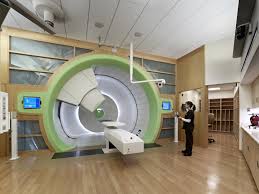
Protons versus Photons for the Treatment of Prostate Cancer
-
The management of clinically localized prostate cancer, or cancer that has not spread beyond the prostate gland, is complex. There are a number of treatment options, ranging from close observation with frequent reassessment (active surveillance), surgery, and radiation therapy.
While each form of active treatment can be effective, all can cause side effects that may impact quality of life. As a result, treatment decisions for localized prostate cancer have become very challenging, as men try to balance the opportunity for maximum cure with the least risk of adverse side effects.
Recently, proton radiotherapy has been publicized as an improvement over conventional techniques of delivering radiation therapy (photon therapy), such as three dimensional conformal or intensity-modulated radiotherapy (IMRT). There is a great deal of enthusiasm regarding its use, as the radiation dose delivered by protons is more precise and may reduce toxicity to normal tissues. As a result, there are currently 10 proton centers in operation in the United States with eight more under development.
However, there is currently no good evidence to suggest that proton therapy is either more effective, or less toxic, than conventional radiotherapy for prostate cancer. In fact, two recent studies have shown that not only are cancer outcomes comparable between patients treated with protons and photons, but that IMRT may result in less gastrointestinal toxicity compared to proton therapy (JNCI study, JAMA study). What these studies most consistently show is that the only measurable difference between proton and conventional radiotherapy is in dollars spent, with proton therapy costing nearly double that of IMRT.
The prostate is a gland that helps make semen and is part of the male reproductive system. The prostate is about the size and shape of a walnut. It has sections, which are called lobes. The prostate lies low in the pelvis, below the bladder and in front of the rectum. The prostate surrounds part of the urethra, the tube that carries urine out of the bladder and through the penis. (Courtesy National Cancer Institute)
Similar to the rapid uptake of robotic surgery, from the physician perspective the proton versus IMRT debate hinges largely on the impact the adoption of unproven technologies has on rapidly escalating healthcare costs. However, at the patient level the controversy surrounding the optimal form of radiation delivery makes already difficult choices for patients even more complicated.
For all treatment decisions, whether it choosing between active surveillance or treatment for low risk disease, radiotherapy or surgery in men with localized intermediate to high risk disease, or proton beam and IMRT for men who have opted for radiation treatment, clear presentation of the risks and benefits of each respective therapy are necessary. Despite relentless marketing pressures, when there is no clear “best treatment” in depth conversations between patients and healthcare providers are necessary to facilitate informed decisions that are optimized to each individual. That way patient satisfaction is determined not by a “proton or photon,” but on their own preferences regarding cancer control and quality of life.
Proton versus intensity-modulated radiotherapy for prostate cancer: patterns of care and early toxicity. Yu JB, Soulos PR, Herrin J, Cramer LD, Potosky AL, Roberts KB, Gross CP. J Natl Cancer Inst. 2013 Jan 2;105(1):25-32. doi: 10.1093/jnci/djs463. Epub 2012 Dec 14.
Intensity-modulated radiation therapy, proton therapy, or conformal radiation therapy and morbidity and disease control in localized prostate cancer. Sheets NC, Goldin GH, Meyer AM, Wu Y, Chang Y, Stürmer T, Holmes JA, Reeve BB, Godley PA, Carpenter WR, Chen RC. JAMA : the journal of the American Medical Association. 2012 Apr 18;307(15):1611-20. doi: 10.1001/jama.2012.460.
